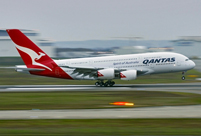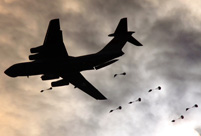 Ballerinas anywhere but onstage
Ballerinas anywhere but onstage
 Top 10 safest airlines in the world
Top 10 safest airlines in the world
 Top 10 most popular instant messaging apps in the world
Top 10 most popular instant messaging apps in the world
 Inspiring shadow images of Chinese army
Inspiring shadow images of Chinese army
 Models shine Xinjiang auto show
Models shine Xinjiang auto show
 From laid-off worker to int'l referee in bodybuilding
From laid-off worker to int'l referee in bodybuilding
 Selected photos of 'two sessions'
Selected photos of 'two sessions'
 Most unusual taxis around the world
Most unusual taxis around the world
 Bridge Worship Festival in Taijiang, SW China
Bridge Worship Festival in Taijiang, SW China
Highlights:
• Eight aircraft were involved Sunday in the search for the missing MH370 in the southern Indian Ocean.
• The international air team are carrying out a visual search, an Australian expert told Xinhua.
• Conditions over the southern Indian Ocean search site were favorable, but the task was complicated.
KUALA LUMPUR/PERTH, March 23 -- Eight aircraft were involved Sunday in the search for the missing Malaysia Airlines flight MH370 in the southern Indian Ocean, said Australian authorities.
The search, focused on finding a 22-meter-long object spotted by a Chinese satellite, has zeroed in on two areas about 2,500 km southwest Australian port city of Perth, said the Australian Maritime Safety Authority (AMSA).
The international air team are carrying out a visual search, with people aboard making the most of good weather to hunt for the object, an Australian expert told Xinhua.
A total of 20 State Emergency Service volunteers from Western Australia would board civil aircraft and act as air observers.
Conditions over the southern Indian Ocean search site were favorable, but the task was complicated by other factors, said John Blaxland, senior fellow of the Strategic and Defence Studies Centre of the Australian National University in Canberra.
However, inclement weather is expected to impact the intensifying search, according to latest information from Australian meteorological authorities on Sunday.
Danita Matusch from the West Australian Bureau of Meteorology told Xinhua that a change in the regional weather pattern would likely hamper the search for the missing Boeing 777 that carried 239 people.
Two Il-76 aircraft from the Chinese Air Force, which will join the search in the southern Indian Ocean on Monday upon the advice of AMSA, has arrived at a Royal Australian Air Force base.
With the search for the missing jet stretching into the 16th day, AMSA reiterated that the operation is a challenging one and asked people to prepare for the worst.
Australian Prime Minister Tony Abbott said Sunday that small pieces of debris were spotted in the southern Indian Ocean, but he added cautiously that it was too early to confirm their linkage to the missing flight.
"Obviously before we can be too specific about what it might be, we need to recover this material. It's still too early to be definite," he said.
Regarding the new satellite imagery released Saturday by China, he said that it suggests at least one large object.
Experts believe its size and shape could match the wing of a Boeing 777.
A Chinese satellite spotted Saturday a floating object along the southern corridor the missing Malaysia Airlines Flight MH370 might have taken.
The satellite images, which China said were taken Tuesday, show that the 22-meter-long, 13-meter-wide object was about 120 km southwest of the objects captured by a satellite disclosed two days before.
The position fell within Saturday's search area but the object was not spotted during the search.
Australia's acting Prime Minister Warren Truss said Saturday that the suspicious objects remained "the best lead" in the massive search for the missing flight.
The objects might have either drifted or sunk, but if there is something to be found, they will be found, Truss told a press conference.
The hunt would continue indefinitely until "we are absolutely satisfied that further searching would be futile," he said. "That day is not in sight."
He said the objects spotted by satellite images provided by AMSA remained "a very credible lead."
International search shifted to the southern corridor after the Australian discovery was announced Thursday. But so far nothing has been found yet.
 Female journalists at 'two sessions'
Female journalists at 'two sessions' Interpreters serving 'two sessions'
Interpreters serving 'two sessions' Female SWAT team in Chongqing
Female SWAT team in Chongqing Top 10 safest airlines in the world
Top 10 safest airlines in the world Old photos of Anti-Japanese War
Old photos of Anti-Japanese War Mysterious 'Dolan Tribe' in Xinjiang
Mysterious 'Dolan Tribe' in Xinjiang A bite of Luoping County
A bite of Luoping County This is Shanghai
This is Shanghai Chinese airborne troops complete parachute training in various training bases
Chinese airborne troops complete parachute training in various training bases Ballerinas anywhere but onstage
Ballerinas anywhere but onstage Most unusual taxis around the world
Most unusual taxis around the world Micro-expression at 'two sessions'
Micro-expression at 'two sessions' Bridge Worship Festival in Taijiang, SW China
Bridge Worship Festival in Taijiang, SW China Hollywood documentary brings Diaoyu Islands truth to new audience
Hollywood documentary brings Diaoyu Islands truth to new audience Miss HK and actresses shine at flower show
Miss HK and actresses shine at flower showDay|Week|Month